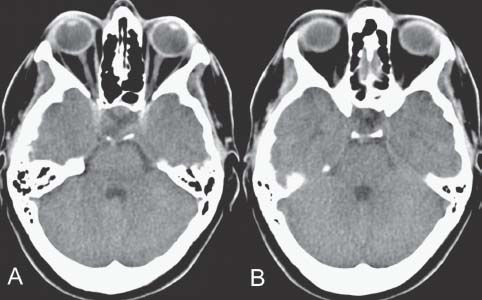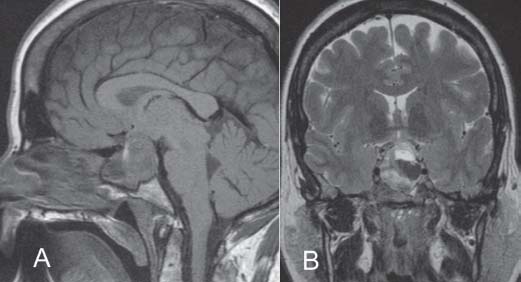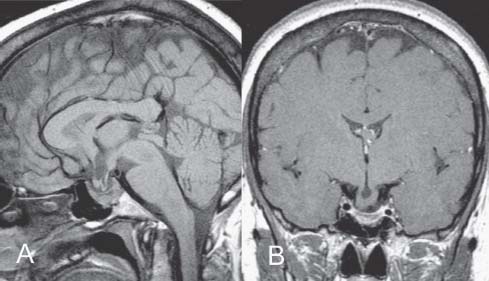Case 11 Pituitary Apoplexy Fig. 11.1 (A,B) Head computed tomography (CT) scan showing axial cuts through the sella turcica. Fig. 11.3 (A) Sagittal T1-weighted magnetic resonance imaging (MRI) scan without gadolinium and (B) coronal T1-weighted MRI scan with gadolinium at the level of the sella.

 Clinical Presentation
Clinical Presentation
 Questions
Questions


 Answers
Answers
< div class='tao-gold-member'>
11 Pituitary Apoplexy
Only gold members can continue reading. Log In or Register to continue

Full access? Get Clinical Tree


